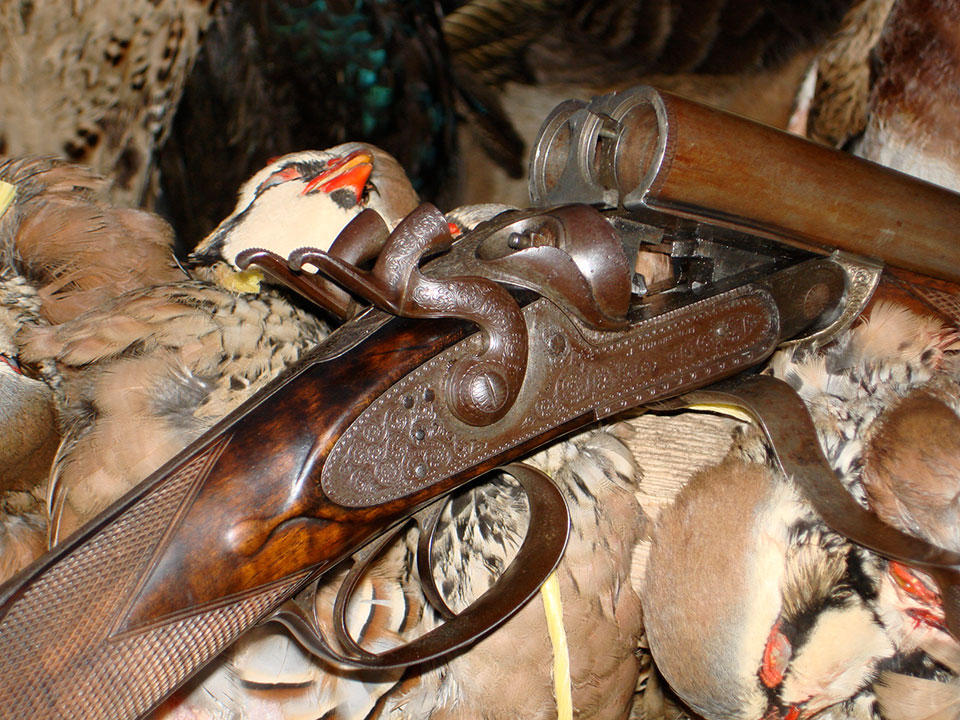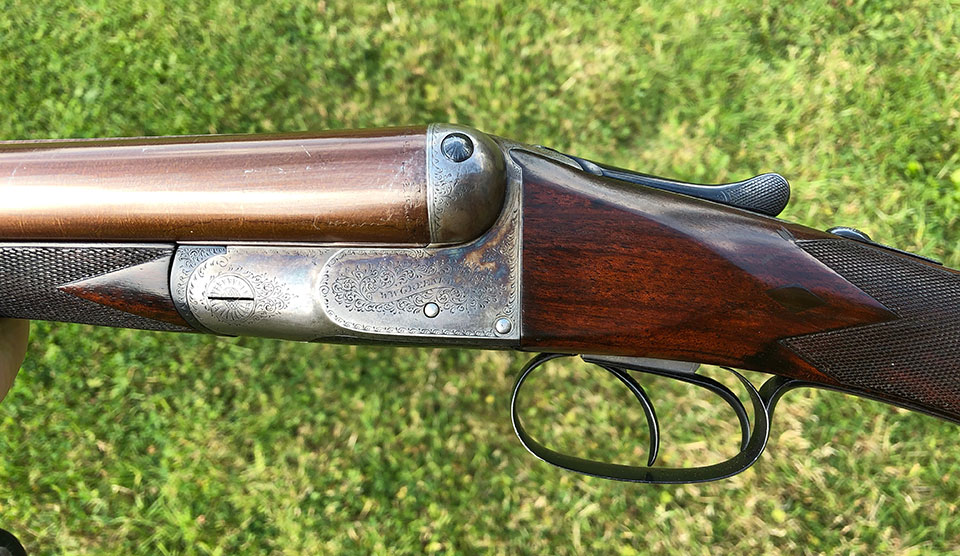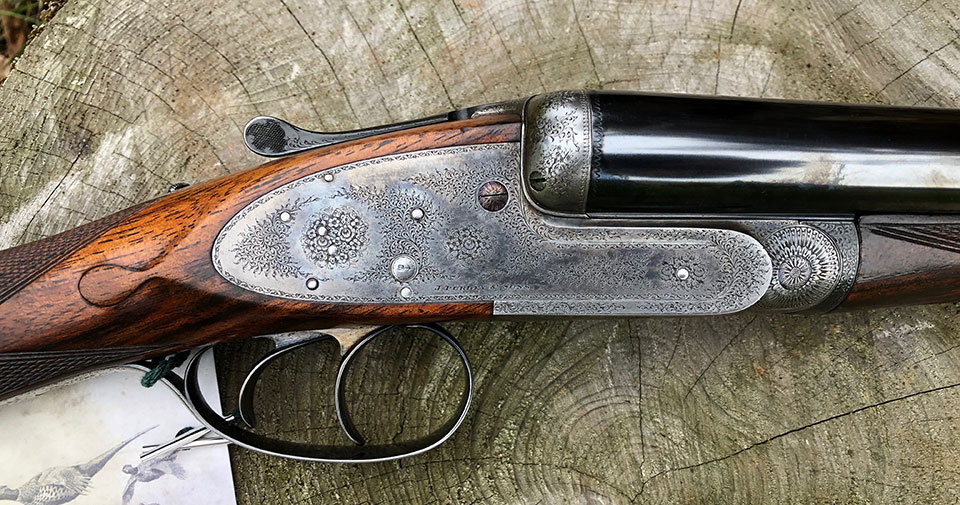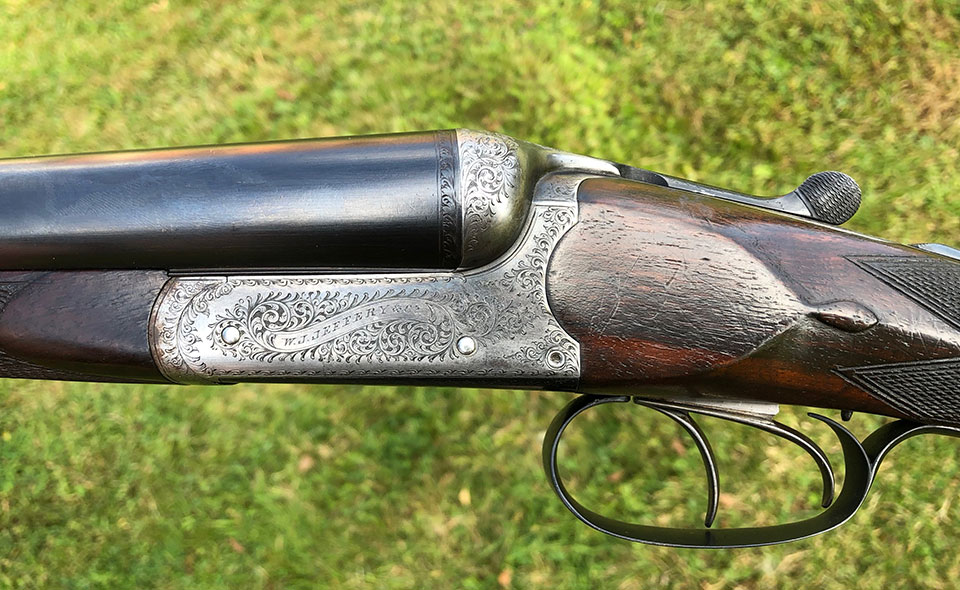Sporting breech-loaders have been with us for a hundred and seventy years in the centre-fire form we all know and love.
British gun makers have been in the habit of making guns so well that they will actually last for a hundred and seventy years of reasonable use. That creates a problem. If you can’t easily wear-out your gun, why ever buy another one? The trick is to convince the sportsman that he needs another, new kind of gun every few years.
Gunmakers, since the dawn of shooting sports, have made fortunes convincing their customers that they need another gun, or that there is a new development they just have to get.
It might be a revolutionary innovation; like a change from loading by muzzle to putting a new-fangled ‘cartridge’ into the breech, or a ‘tweak’; something that might just give you the edge over your fellow sportsmen - like an innovative rib or a barrel bored slightly wider than the norm. Shooters have been suckers for a clever sales pitch since the days of Col. Peter Hawker and they are no different today.
Still, the cry goes out from the novice; “What is the best gun for this kind of shooting?” From the more experienced journeyman, the quest is “What will make me shoot better?” or “How can I improve my scores?”
Helpfully, gunmakers always seem to be creating just what we need. Fashions gain momentum; to the degree that one could be forgiven for thinking that before the current configuration de jour arrived, nobody ever killed a bird nor broke a clay.
My default position is to go back and see what history can teach us. Invariably, what it teaches us is that there are very few truly modern innovations. If an idea was worth trying, old gunmakers tested it thoroughly; years ago.
Don’t believe me? Perhaps we should examine some modern developments and see. One departure from the norm, now much-trumpeted in shooting circles is the concept of one-piece steel barrels, of the type currently employed by Longthorne.
Most barrels these days are made either of the ‘chopper-lump’ type, with tube and lump for each barrel made from the same piece of steel, or ‘mono-block’, with tubes set into the breech end, with its integral lumps. Dove-tail lumps are fitted into a space between the tubes and brazed into place.
However, Longthorne’s barrels are not a new concept. Sir Joseph Whitworth created one-piece barrels in the 1870s and there are hammer guns from the period sporting them. They never found universal favour.
At one time it seemed every Sporting Clays shooter was vying for longer barrels than everyone else.
The fashion today is for very long barrels. At one time it seemed every Sporting Clays shooter was vying for longer barrels than everyone else. George Digweed was, at one time, shooting 34 inch barrels, and, being George Digweed, he did very well with them. However, he reverted to 32 inch tubes after a relatively short time.
A craze for small bores also coincided with the long-barrel fad. We started seeing 20-bores and 28-bores with 32 inch barrels appear on game shoots. However, back in the 1880s the shooting superstars of the day, Lords Walsingham and Ripon, were endlessly experimenting and one of their experiments was with smaller bores and longer barrels.
Ripon owned a Purdey 20-bore with 33 inch barrels and Walsingham had a 16-bore with 32 inch barrels, which he cut down to 30 inches at a later date. Ripon’s was one of his least-used guns, according to its lack of wear, when it appeared at auction recently. Both men did most of their shooting with 30 inch barrelled 12-bores of average weight.
At the other extreme, Robert Churchill popularised (just after WW1) the short-barrelled game gun; his XXV. He was a great salesman and convinced half of England that they would shoot better with a 25 inch barrelled gun, especially if made with his favoured stock shape, with its slightly swept comb, and teamed with his coached shooting technique.
By the 1930s everyone was making short-barrelled guns and the fashion continued until the 1990s. By this time, 28 inches was the norm and many were happily shooting guns with 26 or 27 inch barrels. Older guns with longer barrels were sent for re-barrelling or shortening. Now try selling one: not an easy task, I assure you!
... heavy guns are back in vogue and the desire to shoot faster, ever-heavier cartridges seems unstoppable.
Then we had the light-weight fad. 12-bores were being built around the 6lb mark, or lighter. In the early 1990s everyone wanted these - the lighter the better, it seemed. Now, heavy guns are back in vogue and the desire to shoot faster, ever-heavier cartridges seems unstoppable. People are converting 8 1/2 lb, live-pigeon guns into high-pheasant guns.
But what were the norms of old and why were they reached? Why were they so popular for so long? One writer we can always turn to for detailed descriptions and rationales of practical gun making is W.W Greener.
Greener needs to be read with caution, as he does favour his own inventions and throws the odd brick-bat at the ideas of his rivals but he was a very thorough, and typically Victorian, evidence-led experimenter and analyst of gun-making.
A 12-bore, according to Greener, as late as 1909, was the best gun for a grown man to shoot and he describes it thus: ‘The usual weight is from 6 1/4 to 6 3/4 lbs, the barrels 30 inches long, chambered for the usual cartridge case (2 9/16”). It will shoot 3 drams powder, and 1 1/8 oz of No.5 or No.6 shot’.
On choke, Greener specified a killing circle of 30 inches at thirty yards (right) and at forty yards (left). For covert shooting, he shortened it to a 30 inch killing circle at twenty yards (Right) and thirty yards (left).
As cartridges improved, with the normalising of ‘smokeless’ powders and crimped closure, rather than over-shot cards (giving better patterns), the standard 1 1/8 oz (32g) load gave way to 1 1/6 oz (30g) and many game shooters settled on 1oz (28g) for general shooting.
For most people, shooting has not changed all that much. If you walk-up over spaniels or shoot quarry flushing from cover, you will benefit from a gun that is comfortable to carry, quick to lift onto target and responsive. It will need to throw a nice, even, pattern at twenty yards and have the second shot performing the same way at thirty; exactly as Greener suggested.
If you walk-up over spaniels or shoot quarry flushing from cover, you will benefit from a gun that is comfortable to carry, quick to lift onto target and responsive.
If you shoot birds at longer ranges most of the time - you will find a longer barrelled, heavier gun with tighter chokes provides a sight picture requiring less perceived lead, a smoother swing and better down-range delivery of heavier loads, while taming recoil better.
Contrary to popular myth, a longer barrel makes no difference to the killing effectiveness of the payload. A Full choked 25” barrel and a Full choked 34” barrel will deliver pretty much the same patterns at 45 yards.
If you insist on having a light gun, then there is a discussion to be had regarding gauge. Ballistically, a short shot string is preferable and a short shot column in the cartridge leads to less deformation of the pellets, especially so with fibre wads; to which all game shooters are hopefully now reverting.
That being so, the bigger the bore for a given payload, the better your pattern. The ideal is the ‘square load’ - a shot-stack as high as it is wide. So, if you want to shoot an ounce of lead, a 16-bore will do it better than a 20-bore.
There is a cost to building light guns. Steel and wood add weight so you need to remove them to lighten the gun. You can do this by making all the parts thinner (and weaker), or shorter. All other things being equal, a pair of 16-bore barrels weigh less than a pair of 12-bore barrels because they have less steel in them. So, if you want a 6lb gun to fire an ounce of shot, you will have a stronger gun if you buy a 30” 16-bore, than if you buy a 30” 12-bore.
The other cost of lightweight guns is Newton’s third law of motion. If you buy a 5 1/2 lb 20-bore and put punchy 30g loads through it, it will not be pleasant.
The ideal gun is always a compromise. You want one that does most of what you need it to most of the time. Select choke according to your most frequently encountered targets. Select weight to balance your ability to carry the gun and swing it as often as necessary on a normal shoot day.
Stick to what works for you. If you rough-shoot well with a short barrelled side-by-side, don’t be convinced by everyone else you need a 32” Sporter. Today’s fashion is often tomorrow’s second-hand bargain, as people move on to ‘the next big thing’.
However, the two most critical factors for gun choice are fit and familiarity. If your gun fits you badly, you probably won’t shoot well with it. If you keep swapping guns and ammunition, you will never learn the sight pictures, swing, balance and trigger-pull lessons your gun teaches you over time.
In general terms, most people will shoot best, most of the time, with Greener’s ‘ordinary game gun’. The formula for arriving at that hasn’t really changed since 1900.
It is the most commonly encountered style of gun for a reason. So, rater than looking for the exotic or ‘chasing the unicorn’ of a specification that was hardly ever made, you may realise your ideal gun has been hiding in plain sight all along.
Published by Vintage Guns Ltd on (modified )




